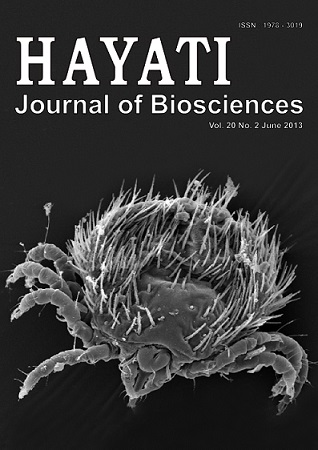Bacterial and Fungal Communities in Tempeh as Reveal by Amplified Ribosomal Intergenic Sequence Analysis
Abstract
Tempeh is an Indonesian traditional fermented food produced using Rhizopus as a starter culture. In practice, however, the starter culture as well as fermentation processes would yield a polymicrobial fermentation, which generated a unique tempeh flavor and texture. This condition makes Indonesian tempeh as one of the most complex fermented food, while at the same time would make it difficult to scale up tempeh production with uniform quality and consistency. The aim of this study was to compare a number of tempeh microbial communities employing Amplified Ribosomal Intergenic Sequence Analysis (ARISA). Fresh tempeh samples were obtained from tempeh producers in Java and Moluccas. 16S rRNA gene libraries and DNA sequencing were employed to analyze further the nature of bacterial diversity in two selected tempeh samples. The results of our study showed that different tempeh producer possessed different Bacterial ARISA (BARISA) or fungi ARISA (FARISA) profiles. However, BARISA profiles were found to be more discriminative than FARISA, and therefore BARISA would be more useful for tempeh genetic fingerprint or barcoding.
Downloads
HAYATI J Biosci is an open access journal and the article's license is CC-BY-NC. This license lets others distribute, remix, tweak, and build upon author's work, as long as they credit the original creation. Authors retain copyright and grant the journal/publisher non exclusive publishing rights with the work simultaneously licensed under a https://creativecommons.org/

























.png) IPB University
IPB University Department of Biology
Department of Biology The Indonesian Biological Society
The Indonesian Biological Society 

